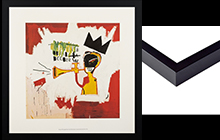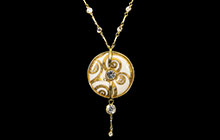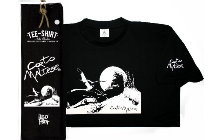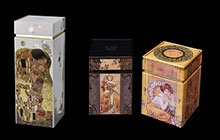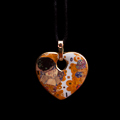Delivery with DHL Express(1 to 5 Days)
All our products are IN stock - IMMEDIATE Shipping
- Passion Estampes Browsing
- Home
- Novelties
- Artists
- Wall decoration
- Products & Gift ideas
- Art Prints
- Lithographs
- Jewels
- Scarves
- Ties
- Tableware
- Puzzles
- Comics world
Gustav KLIMT Pendant
"The kiss"
Front and back decorated porcelain heart pendant.
Jewellery of hard porcelain, decorated with high quality ceramic art prints, real gold platings and Swarovski crystals.
L x l x H : 4 x 4 x 0.5 cm
Weight : 26 gr
Textile cord with fastening : 60 cm
The metal components are antiallergic and nickel-free gold coated
The jewel is presented in its beautiful black and gold colored box
in stock
-
 Cushions
Cushions5 models
-
 Christmas ball
Christmas ballArtistic Ornament
-
 Art Prints
Art PrintsHeavyweight papers
-
 Framed prints
Framed prints16 models
-
 Umbrellas
UmbrellasElegant and fashion
-
 Scarves
ScarvesStoles, Squares
-
 Handbags and accessories
Handbags and accessories -
 Jewelry
JewelryPendants and brooches
-
 Boxes
Boxeswood, tin
-
 Canvas prints
Canvas printsfurthers dimensions
-
 Ties
Ties10 models
-
 Mugs & cups
Mugs & cupscoffee, tea
-
 Plates
PlatesArtis Orbis
-
 Artistic glasses
Artistic glassesChampagne, Vine
-
 Vases
Vasesin porcelain and glass
-
 Desk clocks
Desk clocksArtis Orbis
-
 Art puzzles
Art puzzles1000p, 1500p, 2000p
-
 Note cards
Note cardswith envelopes
-
 Notebooks
NotebooksGold collection
-
 Tapestries
Tapestries& Plaids
-
 Candles
Candles"The kiss"
-
 Puzzles for kids
Puzzles for kidswooden puzzles
-
 Bookmarks
BookmarksSolid brass
-
 Figurines
Figurines"The kiss"
* * *
Main works :
The kiss, The Tree of life, Portrait of Adele Bloch-Bauer, The BeethovenfriesArtistic movements :
Art Nouveau and Vienna Secession.Inspiration, influence :
Byzantine art and the Art Deco gold accentHis contemporaries :
All the revival of the German and Viennese art. Schiele, Kokoshka, Klee, as well as all those who contributed to the birth of the Expressionism.To keep in mind :
Remarkable by the way he changed the world of the painting, Gustav Klimt is one of the main representatives of the Modern Art.To go further :
Two movies speak about the artist and about his work : "Klimt" of Raul Ruiz in 2005 and "Woman in Gold" of Simon Curtis 2015.Our website uses session cookies
Our website uses session cookies to improve site navigation and to enhance your online experience by maintaining information from page to page within these applications. Cookies allow us to personalize the content and facilitate your access to the shopping cart, offer social media features and analyze our traffic.


